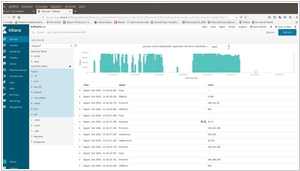Apache Cassandra vs ElasticSearch
August 06, 2023 | Author: Michael Stromann
12

Apache Cassandra is an open source distributed database management system designed to handle large amounts of data across many commodity servers, providing high availability with no single point of failure. Cassandra offers robust support for clusters spanning multiple datacenters, with asynchronous masterless replication allowing low latency operations for all clients.
See also:
Top 10 Big Data platforms
Top 10 Big Data platforms
Apache Cassandra and Elasticsearch are both distributed, open-source database systems, but they serve different purposes and have key differences in their design and functionalities.
Apache Cassandra is a NoSQL database specifically built to handle massive amounts of data with high availability and fault tolerance. It follows a distributed architecture that allows data to be distributed across multiple nodes, making it highly scalable and able to handle large-scale workloads. Cassandra is optimized for write-heavy operations, making it an excellent choice for applications that require rapid and efficient data writes, such as time-series data and transactional applications. Its data model is based on a wide-column store, providing flexibility in defining and updating schema-less data structures. Cassandra's focus on resilience and distributed data storage makes it well-suited for applications that require robustness in the face of hardware failures and network partitions.
On the other hand, Elasticsearch is a distributed search and analytics engine that excels at full-text search and complex querying. While Elasticsearch can store large volumes of data, its primary strength lies in rapid data retrieval and searching. It uses a denormalized JSON-based data model, which allows for easy indexing and querying of structured and unstructured data. Elasticsearch is commonly used for building search engines, log analytics, and data exploration platforms. It provides powerful text analysis capabilities, making it well-suited for applications that require natural language processing and text-based searches. However, Elasticsearch may not be the best choice for workloads that require strict consistency or transactional support, as it prioritizes search and retrieval speed over strong data consistency.
See also: Top 10 Big Data platforms
Apache Cassandra is a NoSQL database specifically built to handle massive amounts of data with high availability and fault tolerance. It follows a distributed architecture that allows data to be distributed across multiple nodes, making it highly scalable and able to handle large-scale workloads. Cassandra is optimized for write-heavy operations, making it an excellent choice for applications that require rapid and efficient data writes, such as time-series data and transactional applications. Its data model is based on a wide-column store, providing flexibility in defining and updating schema-less data structures. Cassandra's focus on resilience and distributed data storage makes it well-suited for applications that require robustness in the face of hardware failures and network partitions.
On the other hand, Elasticsearch is a distributed search and analytics engine that excels at full-text search and complex querying. While Elasticsearch can store large volumes of data, its primary strength lies in rapid data retrieval and searching. It uses a denormalized JSON-based data model, which allows for easy indexing and querying of structured and unstructured data. Elasticsearch is commonly used for building search engines, log analytics, and data exploration platforms. It provides powerful text analysis capabilities, making it well-suited for applications that require natural language processing and text-based searches. However, Elasticsearch may not be the best choice for workloads that require strict consistency or transactional support, as it prioritizes search and retrieval speed over strong data consistency.
See also: Top 10 Big Data platforms




